The following joining methods are common techniques used for securing parts together:
Screw Port
One of the most commonly used features in extrusion design is a screw port. This can be used with self-tapping screws, or can be threaded to take a machine screw. This method provides a strong and robust fix, and allows for disassembly. Consideration should be given to allow clearance for the screw head.
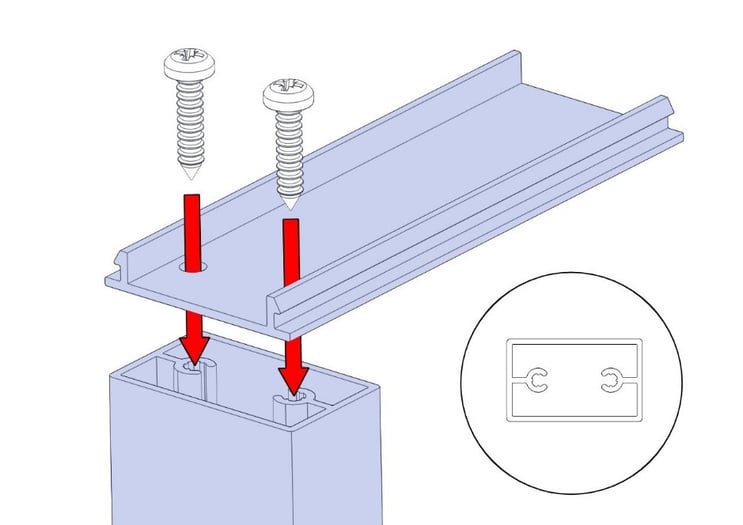
Nut Track
Another common feature included in many extrusions is a nut track. A channel is designed to fit a nut or bolt head tightly between the flats, preventing the nut or bolt head from spinning. Multiple fasteners can be used in one track, and positioned freely.
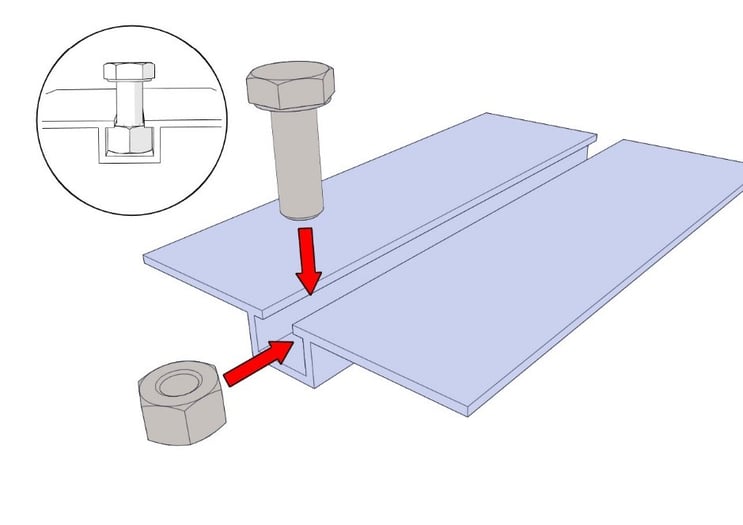
Snap Fit
A quick and easy way to secure two extrusions together is a snap fit. This can be used as a decorative feature to hide unsightly screw heads. It requires no foreign fixings, which simplifies recycling. The lead-in barbs allow the top extrusion to slide and clip over the bottom extrusion, and the natural flex in the aluminium provides a positive snap. However, be aware that a barb with no reverse chamfer will create a permanent snap-fit.
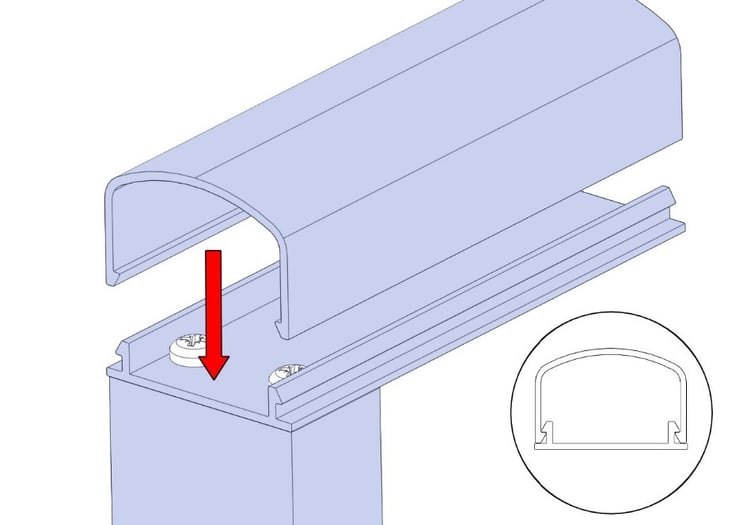
Corner Cleat
Fixing two identical extrusions at an angle can be achieved with the use of a corner cleat. The extrusion has a channel which accepts a cleat, often made of sheet steel or another aluminium profile. The cleat can also have small barbs on each side, which cut into the aluminium creating a friction fit, or alternatively, screws can be added to fix the cleat into position.
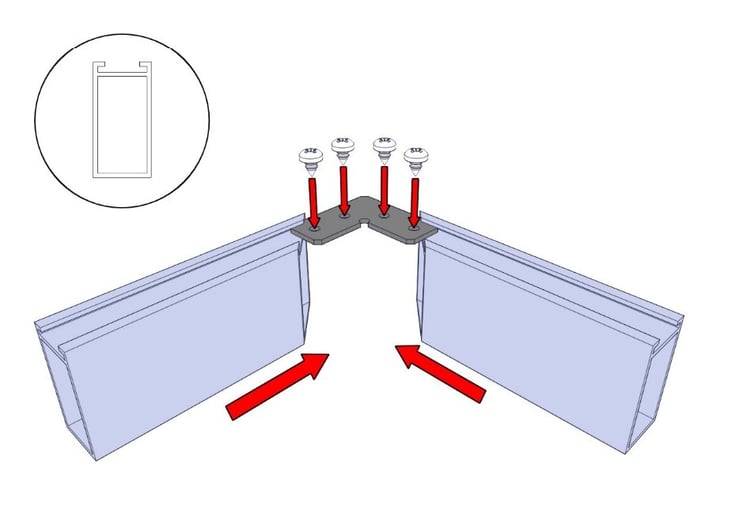
Hinge
A hinge is a great way to fix two aluminium profiles together whilst allowing movement. This can be achieved in many ways, using two cylindrical features. The design below utilises a screw port, allowing a screw and washer to be fixed, preventing longitudinal movement.
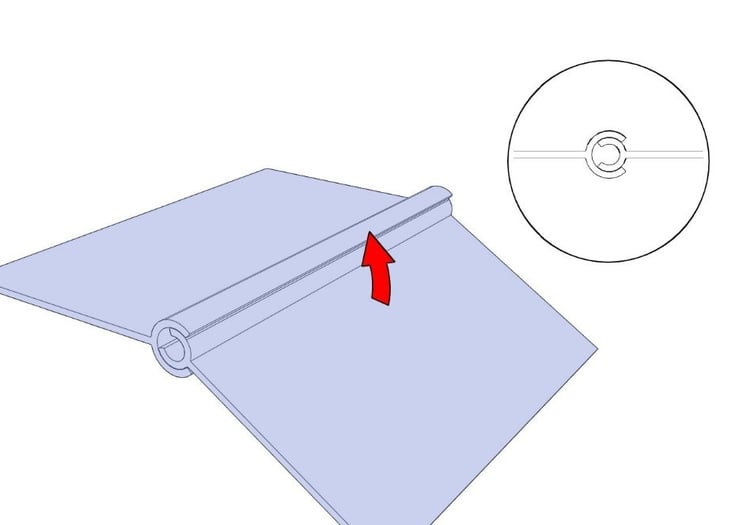
Interlocking
Very simple and effective, interlocking two extrusion profiles allows for a strong and quick fix. This can be achieved by sliding one feature over the other. You may notice that the extrusion below has both the male and female feature in the same profile, which means the same extrusion can be used for base and lid. Be aware however that this requires sliding its entire length, so may not be suitable for use in confined spaces.
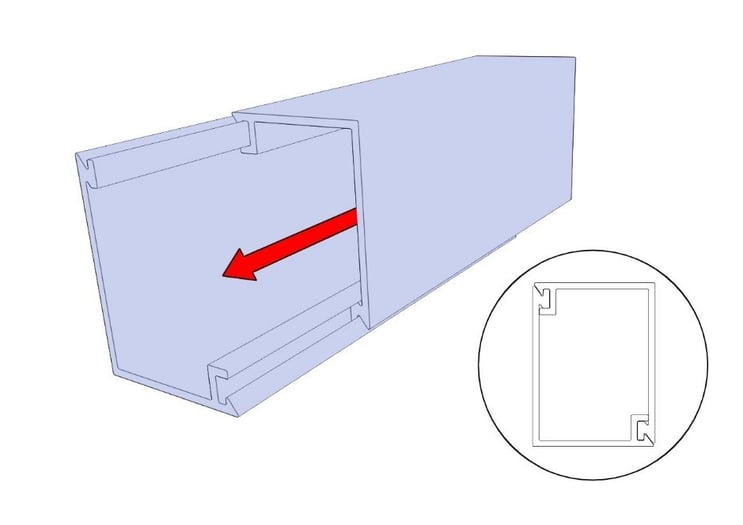
We hope you have found our article on different ways to join aluminium extrusions interesting - and useful! For more great articles, take a look at our Extrusion Academy.
.png?width=150&height=70&name=BWC%20Logo%20(Custom).png)





